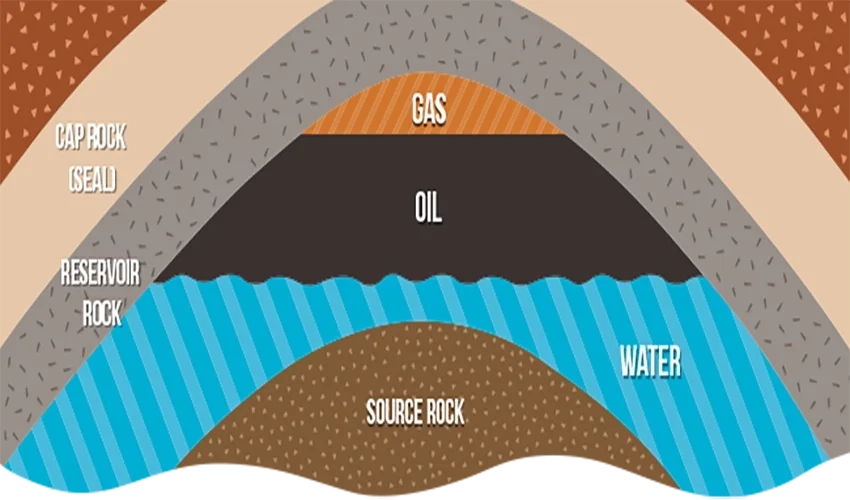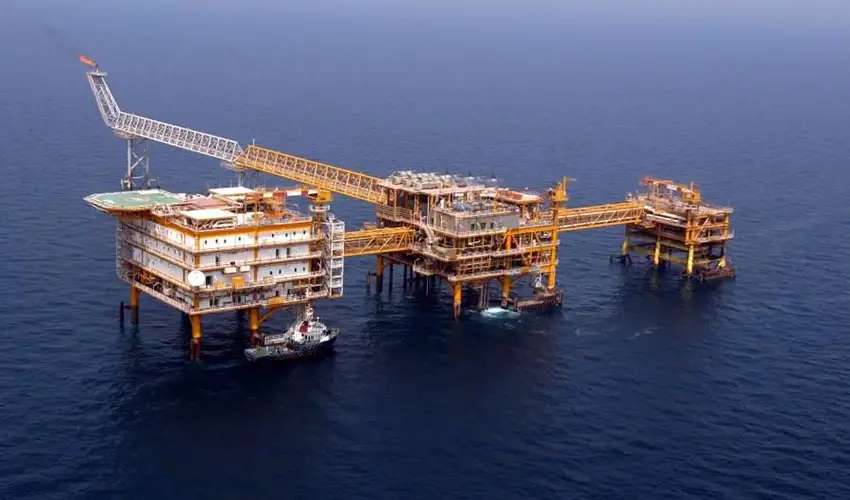In today’s world, natural gas is considered one of the most important clean energy sources and plays a key role in meeting household, industrial, and electricity production needs. Behind every gas flame we see in our homes lies a complex and fascinating story of millions of years of geological activity. Gas fields, as the primary source of this energy, are hidden underground within specific types of rocks, and their discovery and exploitation require deep geological knowledge and advanced technologies.
In this article, you will learn about the concept of gas fields, how they are formed, their main components, and their differences from oil fields. Additionally, you will explore the economic and strategic significance of the world’s largest gas field, South Pars, which holds a considerable share in the economy of Iran and the world. If you are looking to gain a deeper understanding of one of the most valuable energy resources globally, this article provides a comprehensive and straightforward explanation for you.
What is a Gas Field?
A gas field refers to a natural reservoir of natural gas formed underground. Natural gas is typically stored within porous rocks (such as sandstone or limestone). This reservoir is usually covered by an impermeable layer (cap rock) that prevents the gas from escaping to the surface. Natural gas is commonly a primary energy source used for industrial, household, and electricity production purposes. It is important to note that gas fields and oil fields can either be shared or separate.
Main Components of a Gas Field

- Reservoir Rock: A reservoir rock is a porous and permeable layer, such as sandstone or limestone, where natural gas is stored within its pores.
- Source Rock: The source rock is a layer of sediments rich in organic materials that, over millions of years under high pressure and temperature, produces hydrocarbons (oil and gas). It is the primary source for the formation of natural gas.
- Cap Rock: A cap rock is an impermeable layer (such as shale or salt) that lies above the reservoir rock. This layer prevents the natural gas from escaping to upper layers or the surface, trapping it within the reservoir.
- Geological Trap: A geological trap is a structure underground that collects and holds natural gas within the reservoir. Types of traps include anticlines, faults, and stratigraphic traps. These structures allow the accumulation of natural gas in a specific location, creating the conditions necessary for a gas field.
- Formation Water: Formation water is salty or briny water typically found at the lowest layer of the reservoir. It acts as part of the reservoir system and helps keep the natural gas in the upper part of the reservoir rock.
Stages of Gas Field Formation
Accumulation of Organic Matter
Initially, the remains of living organisms such as plants, plankton, and small marine creatures settle at the bottom of seas, wetlands, or lakes. Due to the lack of sufficient oxygen at the seabed, these organic materials do not fully decompose and remain rich in carbon and hydrogen. At this stage, along with organic matter, mineral sediments like mud, sand, and silt accumulate, forming a primary sedimentary layer.
Burial and High Pressure and Temperature
Over time, new sediments accumulate over the previous layers, pushing the organic materials deeper into the earth. Greater depth results in increased pressure and temperature. Under these conditions, organic matter gradually breaks down into simpler chemical compounds. This process, known as kerogen formation, gradually converts organic matter into kerogen, a precursor to oil and gas.
Conversion of Kerogen to Natural Gas
As pressure and temperature increase at greater depths, kerogen transforms into various hydrocarbons. If the pressure and temperature are low, kerogen turns into liquid oil; at higher pressure and temperature, kerogen produces natural gas. This stage, known as pyrolysis, determines the type of final hydrocarbon (oil or gas). Natural gas typically forms at greater depths and under higher temperatures than oil.
Migration of Natural Gas
After natural gas is formed, it moves upward due to its lightness and existing pressure. This movement, called primary migration, directs the gas from the source rock (usually fine-grained and impermeable) to higher layers, such as porous and permeable rocks like sandstone or limestone. Here, natural gas enters the pores of the reservoir rock and becomes ready for accumulation.
Trapping of Gas in the Reservoir
For a gas field to form, natural gas must be trapped within a suitable geological structure, such as an anticline or a fault trap. Above this structure, an impermeable cap rock exists, preventing the gas from escaping to the surface. This stage ensures that natural gas remains under high pressure within the reservoir rock’s pores.
Final Accumulation of Gas
Over time, natural gas fully accumulates within the reservoir. In a gas reservoir, gas, being lighter, resides at the top of the reservoir rock, with oil and water layers possibly located beneath it. This layering (gas, oil, and water) occurs due to the differences in their densities. This stage completes the formation of the gas field.
Preservation of the Gas Field
After the gas field is formed, stable geological conditions are essential to preserve it. The reservoir rock must retain its ability to hold the gas, and the cap rock must prevent leakage. Additionally, geological activities like earthquakes or faulting can damage the gas field or cause gas leakage.
Difference Between Gas Field and Oil Field
Gas fields are typically formed under higher geological temperatures and pressures, whereas oil fields are created under lower temperature and pressure conditions. Economically, gas fields are primarily used for providing clean fuel and feedstock for petrochemical industries, while oil fields serve as the main source for producing liquid fuels such as gasoline and diesel. Additionally, in shared reservoirs, gas, being lighter, is found in the upper section of the reservoir above the oil.
The Largest Gas Field in Iran and the World
The South Pars Gas Field (known as the North Dome in Qatar) is the largest gas reservoir in the world, located on the shared maritime border between Iran and Qatar in the Persian Gulf. It is one of the most important energy resources for Iran. This vast field spans an area of 9,700 square kilometers, of which 3,700 square kilometers belong to Iran. The gas reserves of this field are estimated at approximately 14.2 trillion cubic meters of natural gas (equivalent to 8% of the world’s gas reserves and nearly 47% of Iran’s known gas reserves) and include 18 to 19 billion barrels of condensates. Furthermore, South Pars contains the largest helium reserve in the world and 7.5 billion barrels of crude oil in its oil layers, making it economically unparalleled in contributing to the energy needs of Iran and the world.
Final Words
A gas field refers to a natural reservoir of natural gas stored underground within porous rocks such as sandstone, typically covered by an impermeable layer (cap rock) to prevent gas from escaping. The formation of a gas field takes millions of years and involves the accumulation of organic materials under high pressure and temperature. Natural gas migrates to the reservoir rock and becomes trapped within geological traps. These fields are generally formed under higher temperatures and pressures compared to oil fields and are among the most important sources of clean energy for industries and electricity production. The largest gas field in the world, South Pars (known as the North Dome in Qatar), contains approximately 14.2 trillion cubic meters of natural gas and 19 billion barrels of condensates. Located along the Iran-Qatar maritime border in the Persian Gulf, it accounts for nearly half of Iran’s gas reserves.

